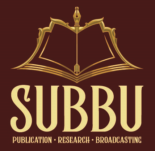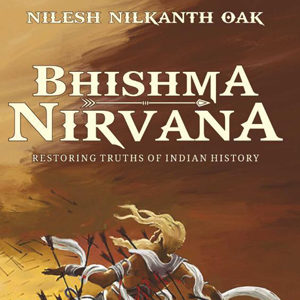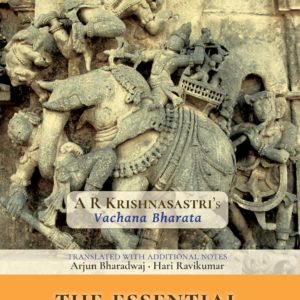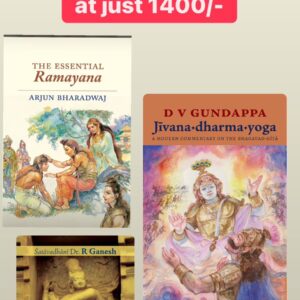An integral part of the Indic renaissance which is often talked about in recent years have been fresh initiatives at dating various events pertaining to our Itihasa as described in the Ramayana and Mahabharata. Geography plays a crucial role in such initiatives as the geological and environmentalchanges which our planet has undergone over millenia can be well traced through markers such as changing sea levels, glacial retreats, sedimentation of bays, dried river beds, etc. Understanding the geography of the wider world as it existed during the time of the Ramayana or Mahabharata becomes asimportant as astronomical and cultural reference points. An example of this is the detailed geographical description of various continents, islands and far-away lands in all four cardinal directions as advised by Sugriva to Vanara scouts on the look-out for Mata Sita in the Valmiki Ramayana.
Mitra Desai’s “Flag of Ananta” takes this quest forward by basing this geographical atlas of Sugriva as the foundation of an exceptionally well researched and engaging book. The book is important in not just consolidating various advances made in the interpretation of the geography of the Ramayana but also in continuing to demolish the colonial mindset of dismissing Itihasa as “Mythology” or “Non-historical”. The book is hence not just a “great read” but a “must read” in the midst of bitter culture wars where threats to Hindu historical identity are increasing alarmingly from various quarters.





GunduHuDuGa (Twitter) –
Subbu Publications have been on the forefront of publishing many books related to our Itihasas and Puranas. The Flag of Ananta is the latest offering which had piqued my curiosity after the recent launch. The first striking feature of the book is the classification as Indology which is a very welcome change as compared to Mythology as quoted for another book I am currently reading.
The Flag of Ananta is a Indology-fiction genre about the journey of a girl athlete, a journey of discovering our ancient roots through Ramayana. Like any modern child, she has her own apprehensions on Valmiki’s magnum opus whose secrets and riches are unravelled through some conversations and unique experiences. Unlike the other common books, the major character from Ramayana in this book is Sugreeva. The main protagonist has an astral travel experience where she comes face to face with Sugreeva and the rest of the book is about her journey where she has a ring-side view of Ramayana as it unfolds over the various kandas of Ramayana.
The author should be appreciated for integrating the various verses from Kishkinda, Sundara and Yuddha kandas along with geographical findings of the modern era which is still trying to explain some of the unique marks across the world like Paracas Candelabra. The author has also interspersed a tribute to Dr. Padmakar Vishnu Vartak whose astral travel experiences are legendary and definitely would appeal to the interest of readers.
In a very recent podcast, Anuradha Goyal ji mentioned that every character in Mahabharatha is named with a specific intent. I could relate to this anecdote when I read this book. I do feel that the name of the main character who is a martial artist, as Bhuvaneshwari is by design, inspired by Bhavani Devi, Gold medallist in fencing. Similarly, the journalist Neeta Prakash is perhaps inspired by the ace journalist Smita Prakash. Each of the characters are quite well brought out (albeit with a one specific observation) and their conversations are quite illuminating.
I do have a couple of observations about few aspects of the book. First, the character of the father is mentioned in only 2 places. I feel that the author could have fleshed this out a little better and could have employed the character to further the narrative with his own unique perspectives.
Next, the book mentions that Ramayana occurred 14000 years ago. This specific dating could be quite contentious as various texts have varied interpretation. While we do have a concept of recurring Ramayana across Manvantharas, Devi Bhagwatha Mahapurana has a specific time line for Vaivaswata Manvnathara i.e. 19th Chatur Yuga, which is a long time back as we are in 28th Chatur Yuga now.
S.D.B. 4.16.14
yugé caikona vinséStha trétakhyé bhagavan harih jamadagnisuto jaté ramoé nama mahabalah
S.D.B 4.16.19
trétayugé raghorvansé ramo dasarathatmajah
Even if we consider 28th CY, the duration of Dwapara is 2000 Deva Varusham which again a large spectrum of time. I do understand that there are different schools of thought, but I am referring to the ones from our Puranas.
Lastly, I personally wasn’t very happy about generalising the Vanaras as forest dwelling tribes who wore masks and tails as appendages as part of appearance. While this could indeed be true, I refer to the original Valmiki Ramayana.
In the first sarga of Kishkinda Kanda, the great Rsi has written
तावृष्यमूकस्य समीपचारी चरन्ददर्शाद्भुतदर्शनीयौ।
शाखामृगाणामधिपस्तरस्वी वितत्रसे नैव चिचेष्ट किञ्चित्।।4.1.128।।
स तौ महात्मा गजमन्दगामी शाखामृगस्तत्र चरञ्चरन्तौ।
दृष्ट्वा विषादं परमं जगाम चिन्तापरीतो भयभारमग्नः।।4.1.129।।
Translates to the ones on the branches of trees, which is Monkeys. I personally believe that Ramayana is from an era where Monkeys were as evolved and knowledgeable as humans. I am highlighting these aspects as the book shouldn’t lead to a dilution of the original epic. Like how the guiding characters of the book emphasise repeatedly, one should learn from the originals.
These minor aspects aside, this book is a VERY GOOD read. If we can love Da Vinci code, I feel there is a much richer, more nuanced imagination about our ancient knowledge systems in this book. This is VERY HIGHLY RECOMMENDED book.
Kudos to Subbu for the fine quality of the book too !!!
https://twitter.com/GunduHuDuGa/status/1723165760149995564
Deepali P –
Mitra Desai ने लिहिलेलं हे पुस्तक Subbu publication च्या Rithwik Subramanya ने प्रकाशित केले आहे.
या पुस्तकातून रामायणातील सुग्रीवाने वर्णन केलेला जगाच्या नकाशाची माहिती सांगितली आहे. ती पण कथा रूपाने. एका युवतीला अनेक प्रश्न पडले आहेत … रामायण खरेच घडले का? त्यात काय तथ्य आहे? त्याचा आज काय उपयोग? इत्यादी. त्या सर्वांची उत्तरे तिला अद्भुत अनुभवातून साक्षात सुग्रीवाकडून मिळतात!
Teenager च्या भाषेत, त्यांना समजेल आणि आवडेल अशा पद्धतीने मांडलेली अद्भुतरस पूर्ण कथा.
ह्या दिवाळी निमित्त teenager मुला-मुलींसाठी तीन इंग्लिश पुस्तके. भेट देण्यासाठी, भाऊबिजेसाठी Right Choice!
Review link: https://is.gd/vHIc61
Prashant K –
आपली पिढी मागच्या पिढीच्या गुजगोष्टी/कानगोष्टी ऐकत मोठी होतं गेली होती शन्का विचारायचो आपण पण पुरावा मागत नव्हतो . सभोवतालच्या वातावारणामुळे आजकालच्या मुलांचा अवाकाच एवढा मोठा आहे की त्यांना पुरावा लागतोच. त्या साठी या पुस्तका सारखे प्रयन्त व्हावेच लागतील.सावध असाल तर किती मोठं आक्रमण आपल्या पिढीवर व्हायला लागलंय याचा अंदाज आलाच असेल याला फक्त आणि फक्त आपली(जे आजच्या घडीला वय वर्ष आठ पासून पंचवीशी पर्यंतच्या मुलांचे आई बाप आहेत.) आपल्या धर्मा बद्दलची/आपल्या संस्कृती बद्दलची अनास्था कारणीभूत आहे. असो.
छोटासा पण अफलातून कार्यक्रम झाला.@ DeepaliPatwadkar ताई एवढ्या सहज साध्या शब्दात एवढं मोठा रामराया कसा माववता तुम्ही?प्रणवजी गोखले नेहमी प्रमाणे बहारदार व्यक्त झाले. @MitraDesai तर diplomat च आहेत त्यात ऑस्ट्रेलिया राहतात. त्यामुळे परकीय धर्माचे आपल्या मुलांना आकर्षण वाटावे म्हणुन होतं असलेले प्रयत्न आणि त्यात येणारे यश प्रकर्षाने त्यांच्या लक्षात आलेले बोलण्यातून जाणवले.
https://is.gd/wBXAXJ
Aniket Shintre –
Wasn’t really into history books before, but ‘Flag of Ananta: In Sugriva’s Footsteps’ totally changed the game for me. The whole time-travel thing with Bhuvaneswari getting thrown back into Ramayana times? Absolutely hooked me in. Mitra did some serious homework to make the old-school India vibe feel real and relatable, even for a history newbie like me.
Honestly, though, a map for all the ancient names and places would’ve been helpful for someone not clued up on Indian epics. But I’m glad I picked this up. It has opened my eyes to a whole new world of stories I was missing out on. Never thought I’d enjoy a book this much. ‘Flag of Ananta’ is like that unexpected chat with someone who’s supposed to be all serious, and then you find out they’re actually a blast to hang out with.
M Padhye –
नुकतेच फ्लॕग आॕफ अनंता हे मित्रा देसाई लिखित पुस्तक वाचनात आले . एका जिगरबाज खेळाडूची रहस्यमय कथा आपल्याला सहज रामायण कालात घेऊन जाते. लेखिकेने अतिशय ओघवत्या व आत्ताच्या भाषेत प्राचीन कालीन प्रसंग लिहिले आहेत. त्यामुळे पुस्तक आपल्याला गुंतवून ठेवते. प्राचीन भारतीय संस्कृती व परंपरा याकडे ‘mythology ‘ म्हणून पहाण्याचा जगाचा दृष्टिकोन आहे.पण हे पुस्तक भारतीय इतिहास ही सत्य जीवनशैली होती हे ग्रथसंदर्भ व संशोधनाचे अनेक दाखले देऊन सिद्ध करते. अनेक नव वाचकाना यातून प्रेरणा मिळून भारतीय प्राचीन इतिहासाचा अभ्यास करण्यास ते प्रवृत्त होतील असा विश्वास वाटतो.लेखिकेचे अभिनंदन व पुढील कार्यास शुभेच्छा !
Yogesh Apte –
My life is deeply rooted in science and evidence, much like Bhuvaneswari’s initial skepticism in ‘Flag of Ananta.’ This book, however, opened my eyes to the seamless blend of history or itihasa and the truths that lie within our ancient texts, mirroring my own journey of discovery in the vast world of medicine. The personal connection for me was profound; growing up, I always had a keen interest in the stories of our past, but like Bhuvaneswari, I sought empirical evidence. ‘Flag of Ananta’ provided that bridge between belief and understanding, between science and shraddha.
Having known Mitra for several years, I’ve been privileged to witness her dedication and meticulous research firsthand. Her passion for uncovering the truth behind our itihasa is infectious, and her ability to weave these elements into a compelling narrative is unmatched.
‘Flag of Ananta’ is not just a book; it’s a journey—a journey that I found enlightening and profoundly moving. It’s a must-read for anyone interested in exploring the depths of our heritage. Kudos to Mitra and best wishes for the next one.
Mihir Choudhary –
Flag of Ananta: When I started reading it, I was only aware that this was related to Ramayana, nothing more. But after reading, I learnt it was more about Sugriva
travels and knowledge of geography, which I was unaware about! It is an insightful story combining modern era with the Ramayan era. Some of our Sanatana dharma concepts are nicely highlighted in the quest to find unanswered questions. This book has motivated me to travel to the flag of Ananta in Peru.
Ashish Iyer –
Fun reading this book. Beautiful blend of Ramayana in a fiction story. Love the concept of the story within a story. This will definitely encourage people to read Valmiki Ramayana to know more. Go for it.